Let me guide you to Brazil, a country that should be on everyone’s bucket list and that I’ve started to explore by travelling the South.

Actually, I think there are countries that are automatically on every traveller’s bucket list: Australia, India…and Brazil is a country like that, too.
For me, the danger with these standard bucket list countries is that since they are permanently there, I feel no rush to visit. I always knew that I wanted to explore Brazil one day. Yes, one day….
A Dream Comes True
….and then this day came much sooner than I expected and I’m very happy that I finally connected with this marvelous country.
That I spent one month in Brazil was sort of a happy incident.
Actually, I was searching the internet for a reasonably priced Portuguese course. While checking all these overpriced schools in Lisbon, I suddenly found a page where Portuguese lessons in Brazil were advertised.
What? An educational leave in Brazil? How cool would that be!
I was ready to pack my bags.
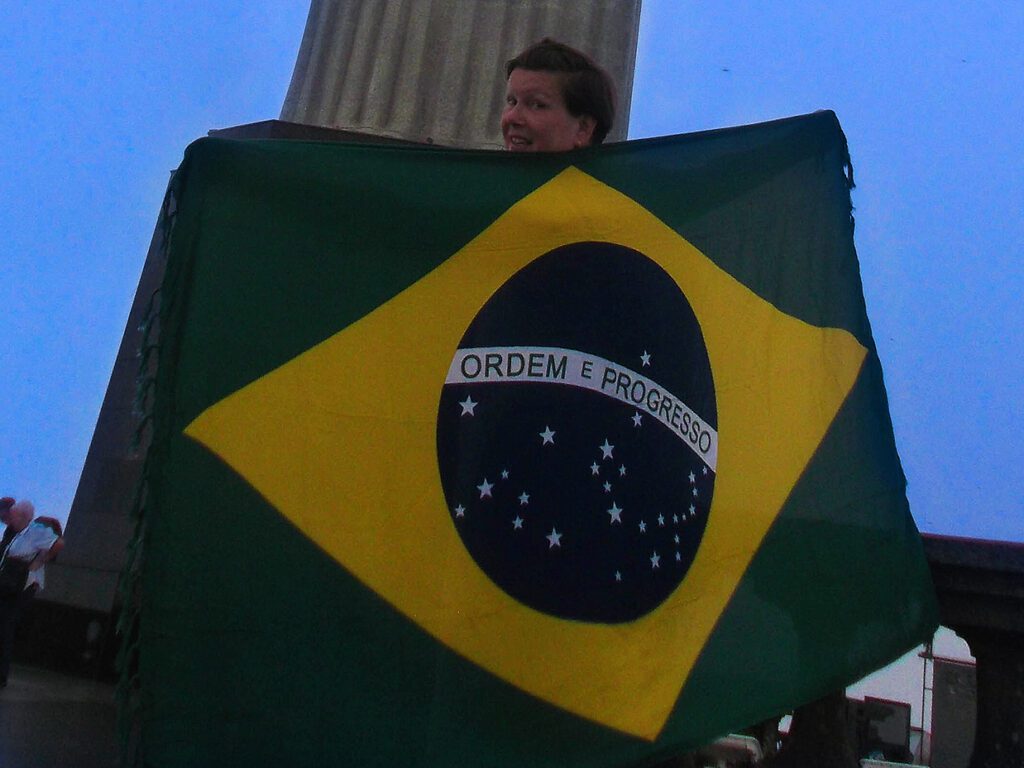
Did the four weeks in Brazil put a checkmark on my bucket list? Of course not!
Brazil is far too big and diverse to be visited in only four weeks.
The country’s geography varies from rain forests in the Amazonas in the north to hills and mountains in the south. And of course, there are the endless shores along the Atlantic ocean where most of the bigger cities are located.
While 93 percent of the Atlantic coastal rainforest is destroyed, the tropical rainforest of the Amazonas is one of the world’s largest jungles.
Hence, I only visited the southern region – which can deem a bit too European, like for instance also Argentina. Now, I’m planning to go back as soon as I can to see the Caribbean coast and at least a part of the Amazon region in the north.
But before I make further plans, let me introduce you to the places I’ve seen.
All of them were marvelous and mostly even nicer than I expected them to be.
History in a Nutshell
After Russia, Canada, the US, and China, Brazil is the fifth-largest state in the world. It’s the largest and most populous South American country, covering almost half of the continent. They have about 210 million inhabitants.
Chile and Ecuador are the only two countries in South America not bordering Brazil.
The thing Brazil has in common with every country in the Americas is sadly a cruel and colonial past as well as a rough political development.
By the contract of Tordesillas, Brazil became a Portuguese colony in 1494. Over the following three centuries, the country was populated by immigrants from many different countries; and by slaves stolen from Africa.
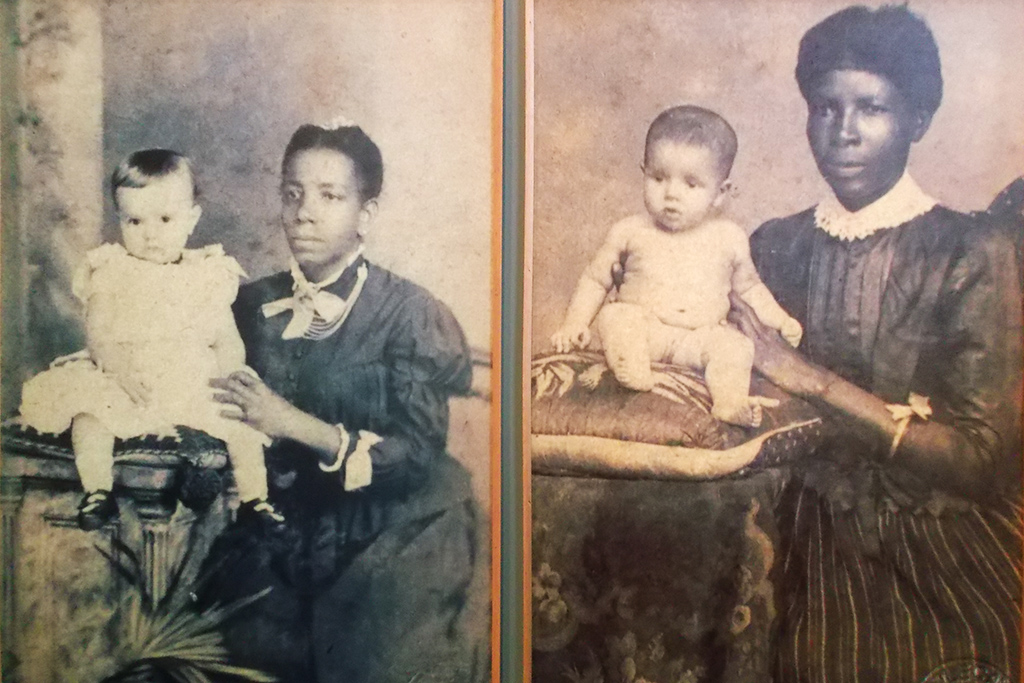
To this day, Brazil has an impressive ethnic variety and I didn’t notice racism in everyday life. However, I know that Brazilians will disapprove, and statistics do speak a different language.
Free at Last
After its independence in 1822, Brazil became a constitutional monarchy and eventually a republic in 1889.
From 1964 to 1985, Brazil was ruled by a military government. While particularly the indigenous population suffered from human rights violations, the economy improved, and many prestigious projects were initiated such as Usina Itaipú in Foz do Iguaꞔu.
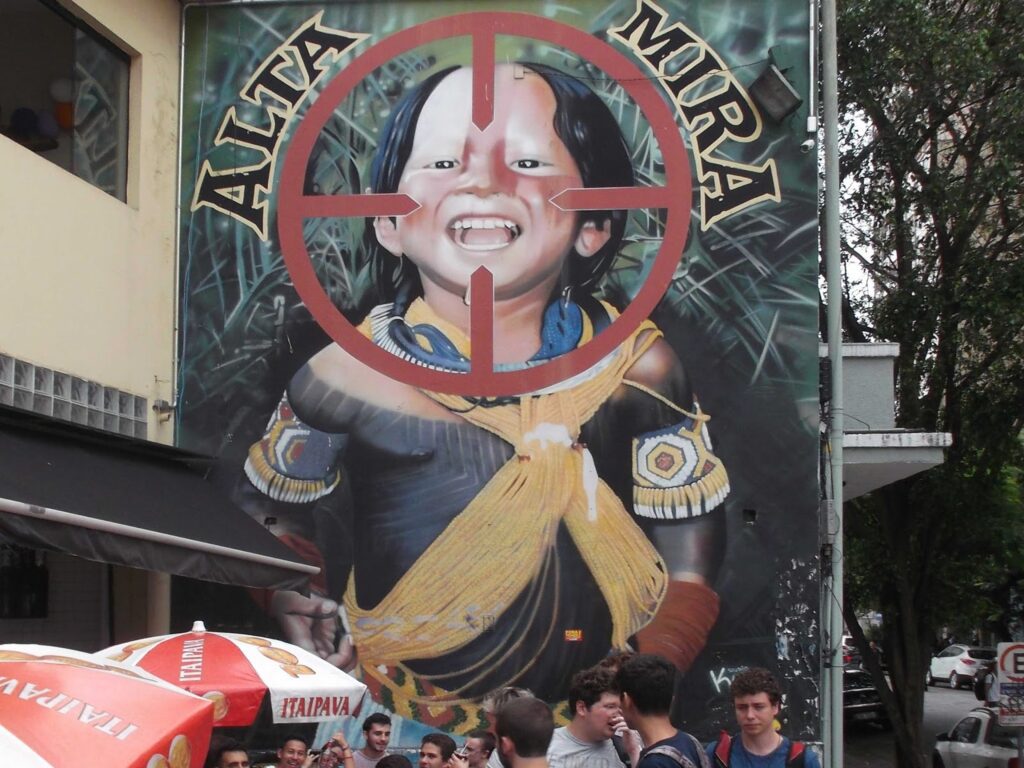
Unprofitable governmental enterprises and a high accumulation of debts were the consequences of this policy.
Finally, after over three decades of dictatorship, in 1985 began the ‘Nova República’ – a democratic, presidential government.
Still, a major political problem in Brazil is the high number of incompetent parties without valid programs. Their coalitions have so far only lasted for a short time. The confusingly high number of small parties and mainly the corruption cause frustration, mistrust, and a politically very unstable situation.
No Messiah
Things didn’t get really better as Jair Messias Bolsonaro entered the political stage. And yes, his second name is actually messias, which is beyond hilarious.
Bolsonaro pursued right-wing and neoliberal politics. He gained attention mainly with misogynistic, homophobic, racist, and anti-scientific statements. Also, he is defending the Brazilian military dictatorship. Needless to say that his political friends and allies have been people like Donald Trump.
Good news: In October 2022, Bolsonaro narrowly lost the election against Luiz Inácio Lula da Silva aka Lula. Let’s see if things increase.
Note: If you are a history teacher, you might find this outline somewhat simplified. It is. Also, my personal political opinion might shine through. Since this is mainly a travel post, the historical and political info is basic and in places not complete.
Practical Information
How to Get There
By Plane
After the US, with over 4,000, Brazil has the highest number of airports in the world! Amazingly, most tourists are frequenting only two of them: Antonio Carlos Jobim International Airport in Galeão on the outskirts of Rio de Janeiro and Guarulhos International Airport in São Paulo.
Especially if you’ve just landed after dark in either of these cities, you might want to take a cab. Don’t worry that this might be the first scam, since there are desks where you pay a standardized fare so that you don’t have to haggle with the driver.
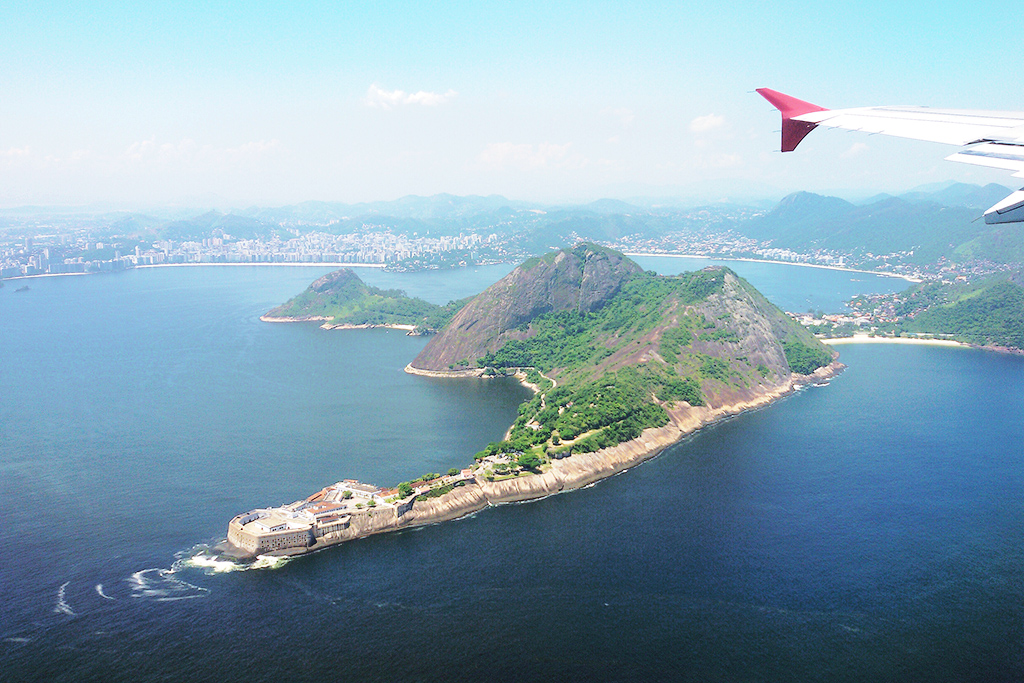
Obviously, there are special airport shuttles going to some most frequented spots as well as common city buses. They are a valid option if you know your way and don’t venture around with your luggage and valuables at night. Also, speaking some Portuguese doesn’t hurt since even the drivers of the airport shuttle buses often hardly speak any English.
Keep in mind that Rio de Janeiro, as well as São Paulo, are megacities with some pretty sketchy neighborhoods and a couple of people who are up to no good.
As I extensively pointed out in my post on travel anxiety and travel safety, the general rule should always be Safety First. It’s ridiculous to spend hundreds of dollars on an air ticket and eventually risk your life because of 30 bucks.
Long-Distance Bus
If you are already on the South American continent, you can obviously cross the border into Brazil by bus. But first, check your options: Latin America is huge, and already national bus travel can be a challenge. Road tripping already within the country can easily take two to three days, let alone coming in from neighboring countries like Argentina or Peru.
How to Get Around
Domestic Flights
After my language course in Rio de Janeiro was over, I went to São Paulo, Bonito, Curitiba all the way to Foz do Iguaꞔu. Since I had only twelve days for the road trip, I made it basically an air trip: Besides the route from Rio to São Paulo, where I went by bus, I was flying.
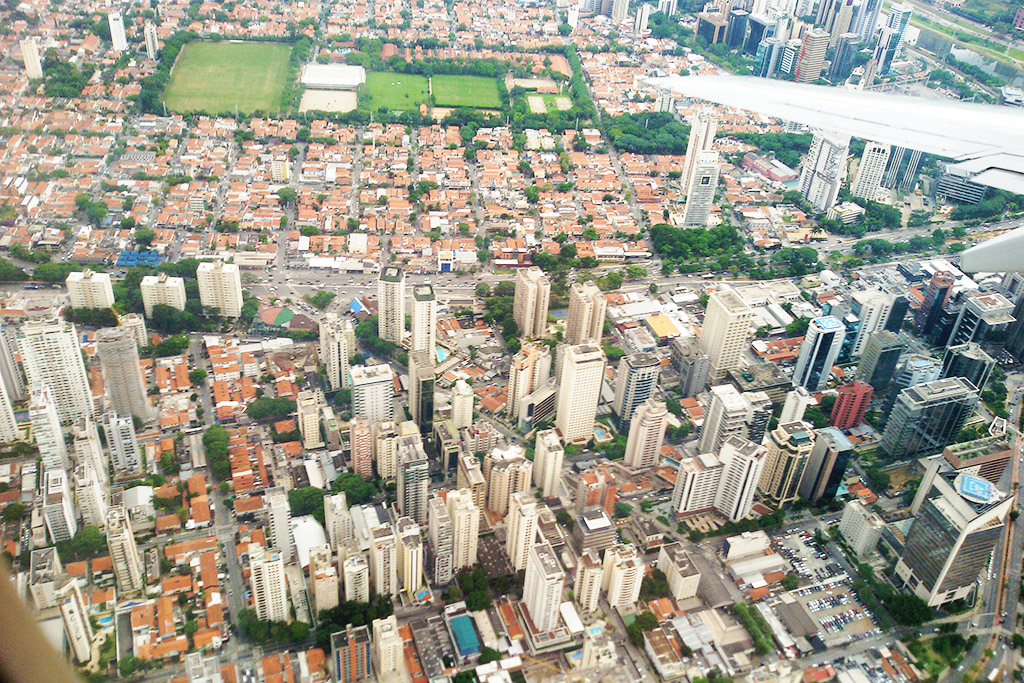
The tickets were pretty cheap since I had booked them about two months ahead. However, if I had more time, I wouldn’t mind going by bus: The overland buses in Brazil are very comfortable and clean and I totally see myself getting some sleep when travelling at night.
As in most other South American countries, there is no intercity rail system. However, local and regional trains around metropolitan areas are good and reliable. Also, there are scenic routes which are, obviously, rather tourist attractions than serious means of public transportation. A lovely example is the Serra Verde Express between Curitiba and Morretes.
Local Public Transportation
Basically, all larger cities in Brazil have an excellent network of public transportation. There are, obviously, buses, but also trams. In Rio and Sao Paulo are also subways. To make things more interesting, tickets between different means of transportation are not interchangeable. That means that for instance in Rio, you have a rechargeable travel card for the subway and another one for the tram and if you take a bus, you pay extra. However, there are some more or less complex combos – good luck with that! In general, a single ride costs the equivalent of about 80 cents US.
All in all, I found the means of public transport pleasantly reliable and clean.
You will certainly appreciate the option to search for your connections on google maps.
Where to Stay
From fancy five-star hotels to cheap bunk beds in hostels – there are various lodging options basically everywhere. In most cases, however, the prices are not notably cheaper than for instance in Southern Europe – especially in touristy places such as Rio de Janeiro and Foz do Iguaꞔu.
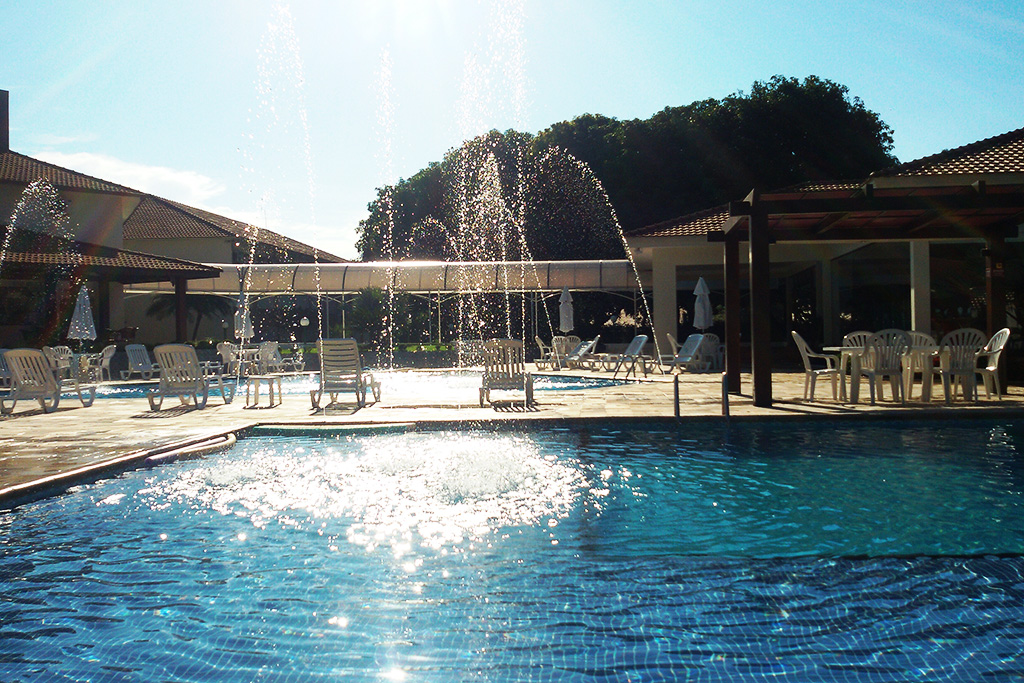
Nevertheless, if you do some research and book well ahead, you might find excellent lodging options at reasonable rates.
I recommend accommodations for certain places in the individual posts below. On this map*, however, will help you find adequate accommodations all over Brazil:
What to Eat
Obviously, there are tons of snack bars, food courts, and restaurants in Brazil.
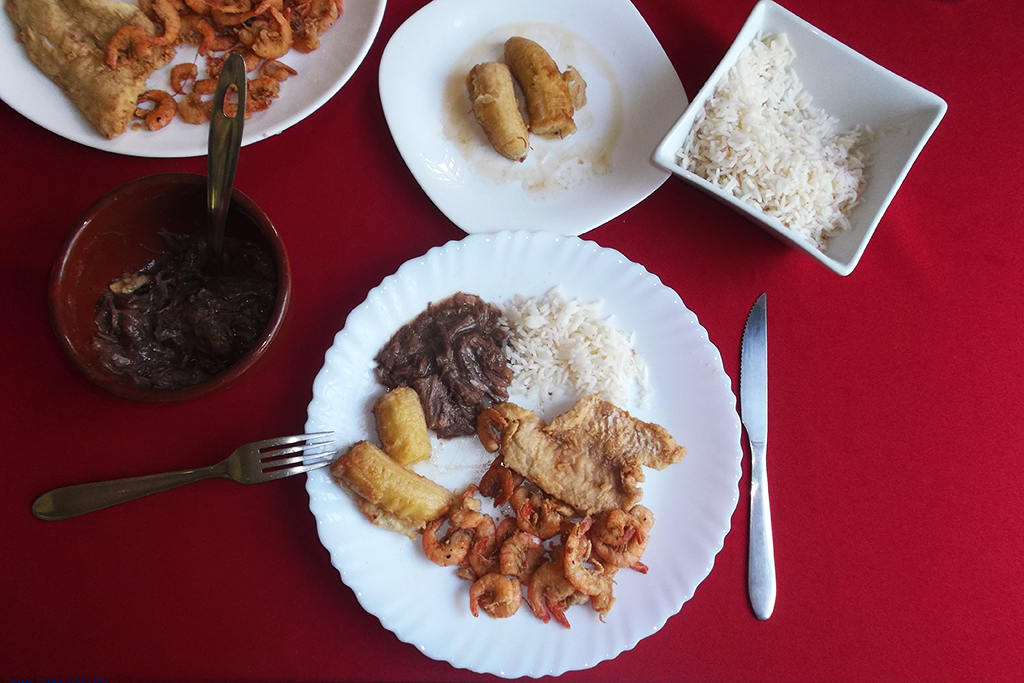
Food is always plentiful, albeit often much less ‘exotic’ or spicy than you might expect. I mean, one of the most popular foods is Feijoada, a stew of beans with beef and pork, and an unmissable ingredient is Farofa, a toasted cassava or corn flour mixture. It looks like sawdust – and tastes equally.
In general, Brazilian cuisine is heavy on the meaty side and not very exciting.
Just like the lodging, the food is not dirt cheap but approximately like in Southern Europe.
What to See
I’m an avid solo-travelling woman. Since solo travel doesn’t equal solitude, I love to join organized tours here and there. They allow me to meet fellow travellers – for just a short moment or a lifelong friendship.
Therefore, here are some great ideas of what to do during your stay in Brazil. Especially if you have only a short time to stay, they’ll enable you to make the best of it*:
You’ll find more ideas in the post on the individual places.
Cash And Cards
The currency in Brazil is the Real (plural Reais) and the rate is 1 US$ = 5,41 R$ as of August 2025. For further conversion, check this page.
Of course, there is cash and there are cards. Because of the relatively high crime rate such as pickpocketing, Brazilians tend to pay even tiny amounts with debit cards. Even street vendors and hawkers are accepting them when someone just buys a newspaper and a chewing gum.
Although there are notably many ATMs all over the place, not all of them work with international credit cards. But don’t panic, there are so many different banks – sooner or later, you’ll figure out which one works with your card.
Yet, you might encounter another small problem. There simply might not be enough cash in that stupid thing.
Yes, waiting is frustrating when you have to find out that the person before you got the last bills.
Also, some ATMs are limited to certain rather low amounts, which is annoying since no matter how much you get, you always pay the same fee.
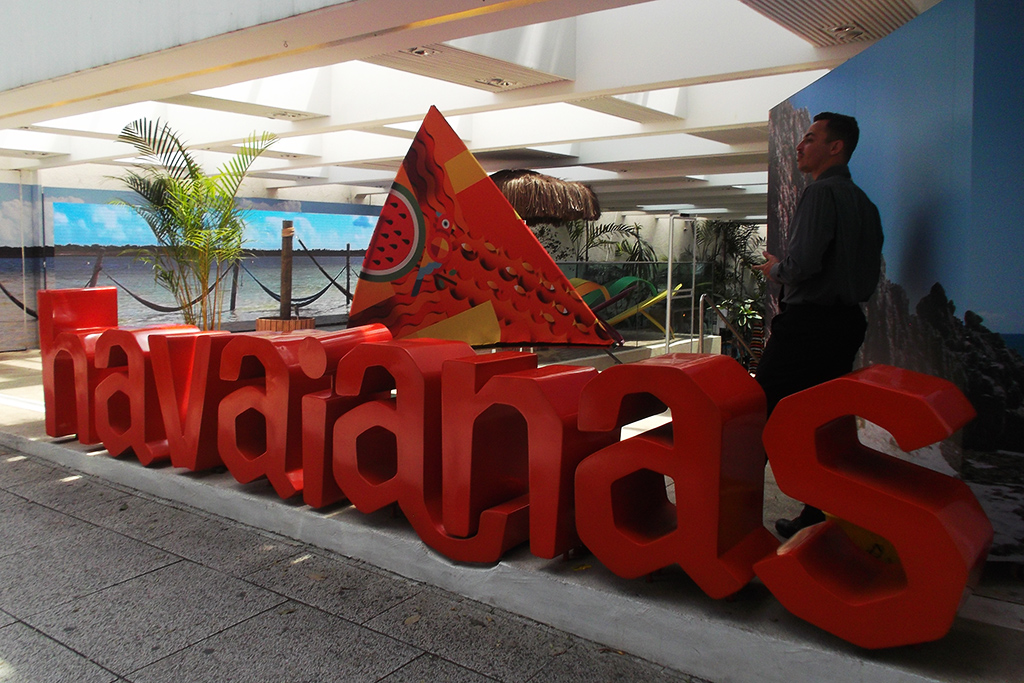
In case you tend to overpack when travelling: Roadtripping through Brazil, you can leave your kitchen sink at home. In larger cities, you can buy everything you might need. Unfortunately, you’ll even find all these globally operating food, fashion, and cosmetics chains.
Language
Since Brazil used to be a Portuguese colony, people speak Portuguese. Surprisingly few people speak decent English.
Also, don’t rely on your knowledge of Spanish or Italian. Although I personally find that one could easily scrape through with these languages, most local people don’t seem to hear any similarity whatsoever.
I therefore strongly recommend learning at least some Portuguese before visiting, for instance, online with babbel.com.
For two weeks, I actually took language lessons in Rio de Janeiro, which was a great experience and enriched my stay in many ways. To learn more about this option, please go to my post Language Learning in Brazil.
Communication and Connection
Brazil is one of the very few countries where I got a national SIM card. To be honest, for the sole reason that I had accidentally blocked mine and wasn’t able to use my phone at all. I got a prepaid card from Claro and was very happy with their service.
This being said, I actually prefer to use free WiFi. Actually, there was a connection to the internet without any issue at basically every museum, eatery or café, and, of course, hotel. Worked like a charm.
At the end of my trip to Brazil, I had three or four different adapters. Although there is an official type N socket and plug, you’ll also find type C plugs. Also, there were type A sockets like in the US – howsoever, it was a wild mix, but in the end, everything turned out fine.
Also, the voltage is either 127 or 220 V, and the frequency is 60 Hz. Thank God, nowadays, all these chargers for phones and readers, and computers have integrated adapters. Therefore, voltage and frequency don’t really matter.
Gone are the days when you blew your electric appliances since you forgot to switch them from 110 to 220 V…good times By the way, you’ll find this kind of practical travel info in my post World’s Most Complete Travel Information – an indispensable globetrotter classic.
Places to See
Read stories and get detailed travel information in these posts about the individual destinations I’ve visited.
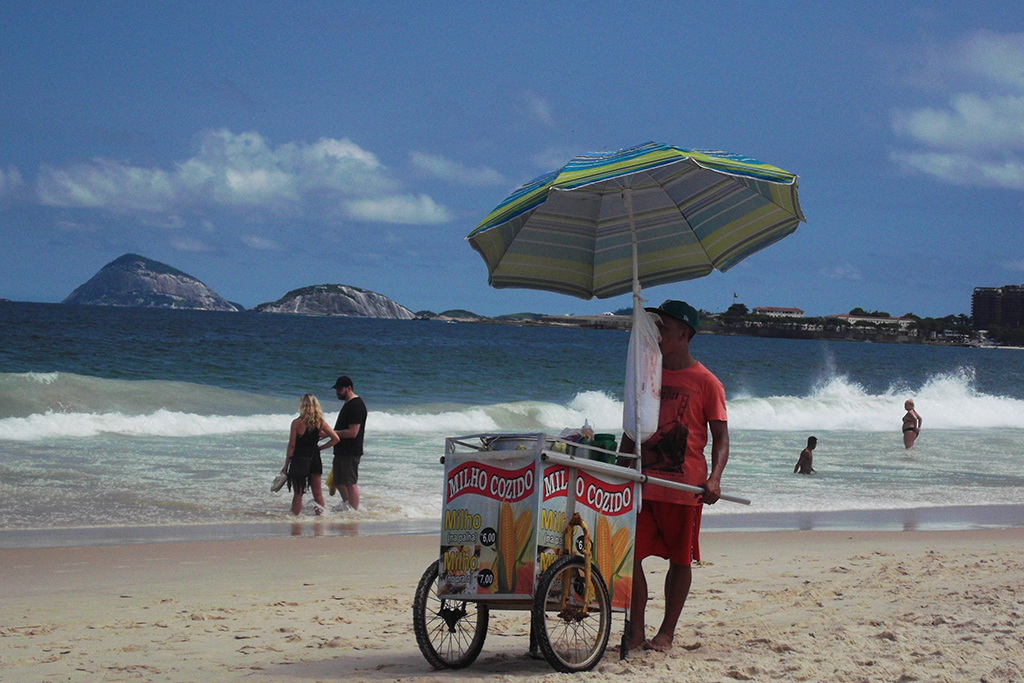
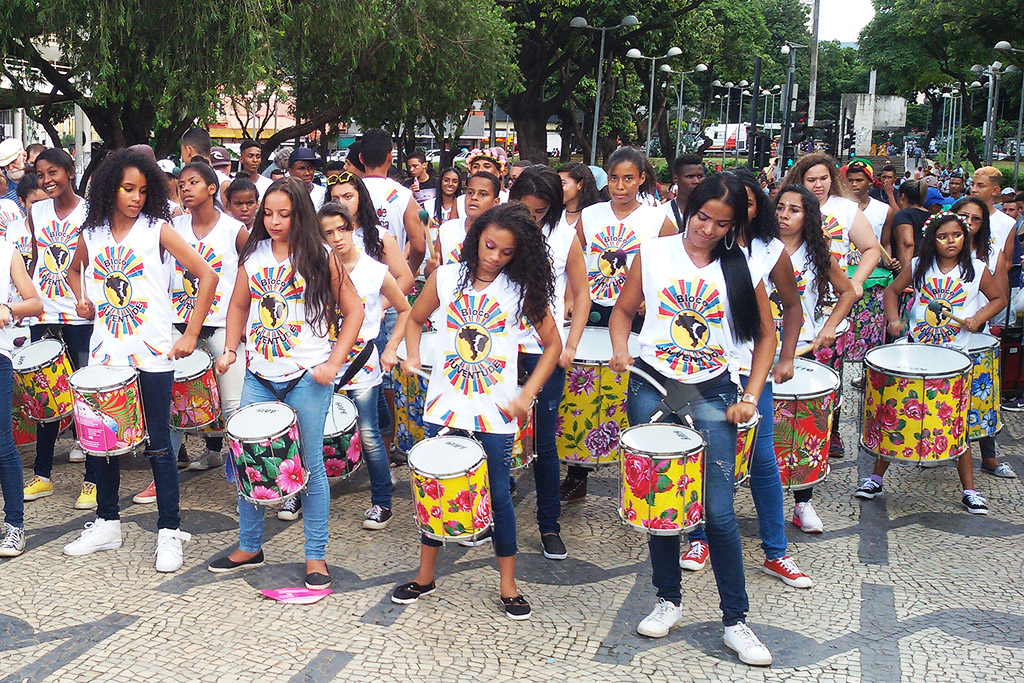
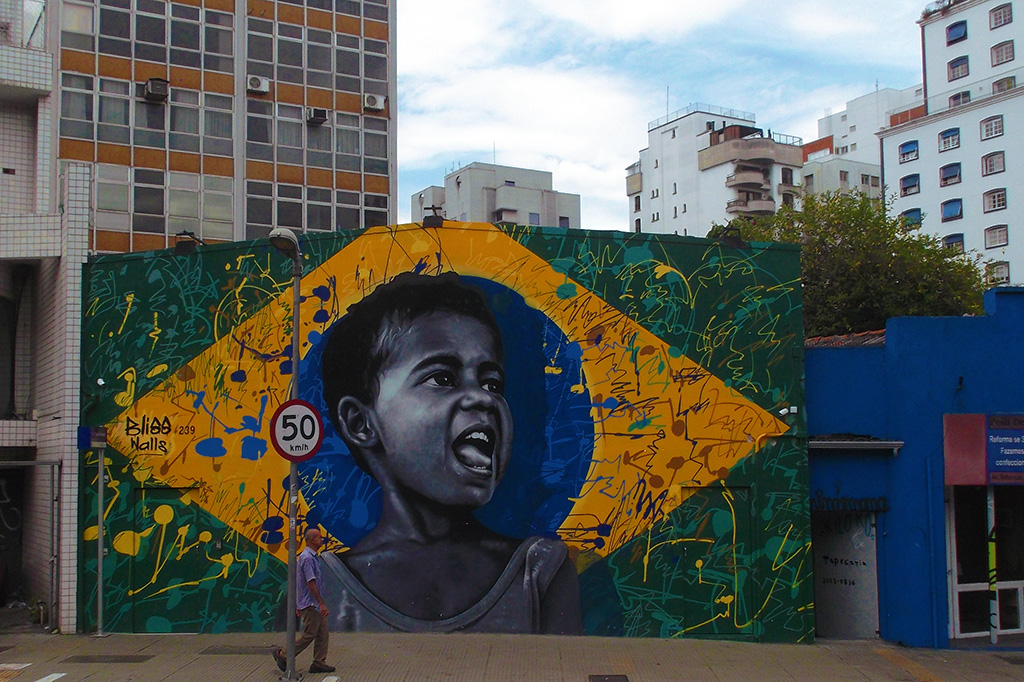
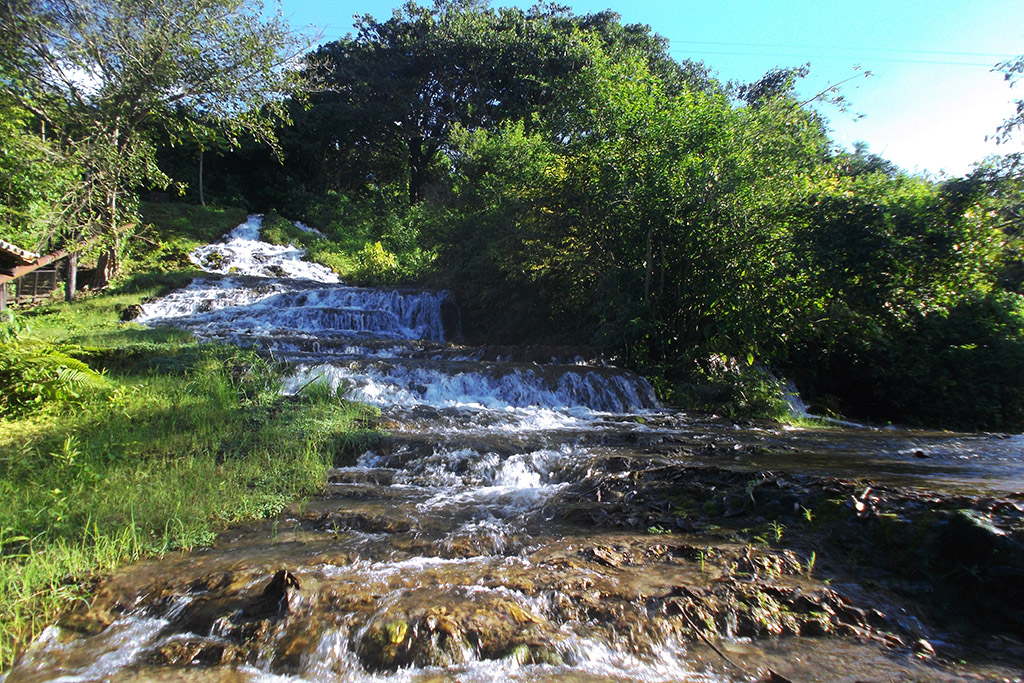
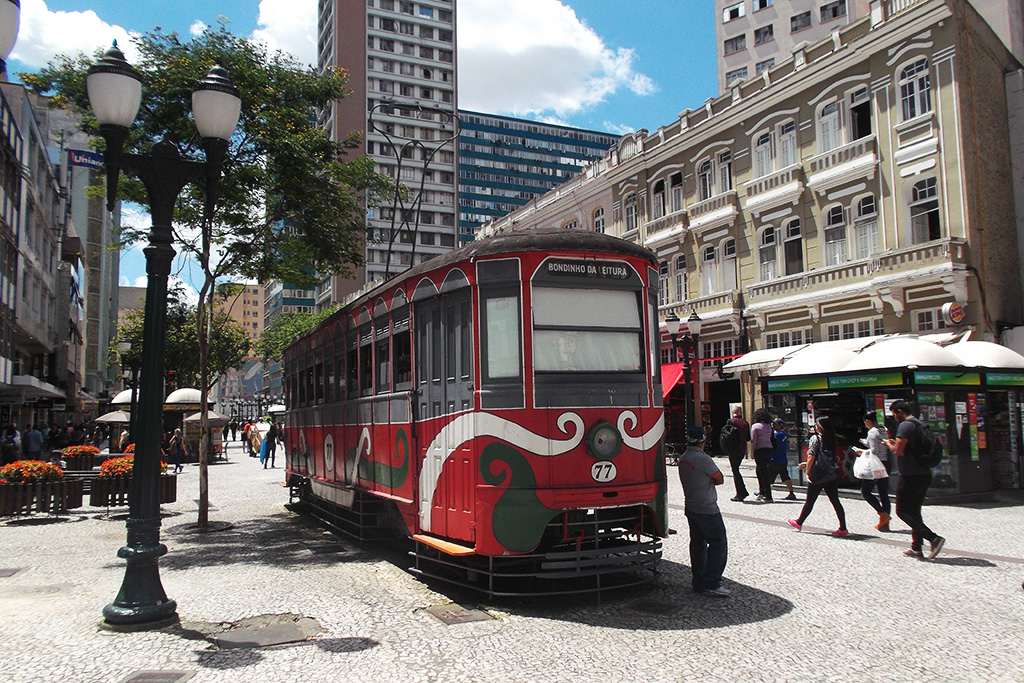
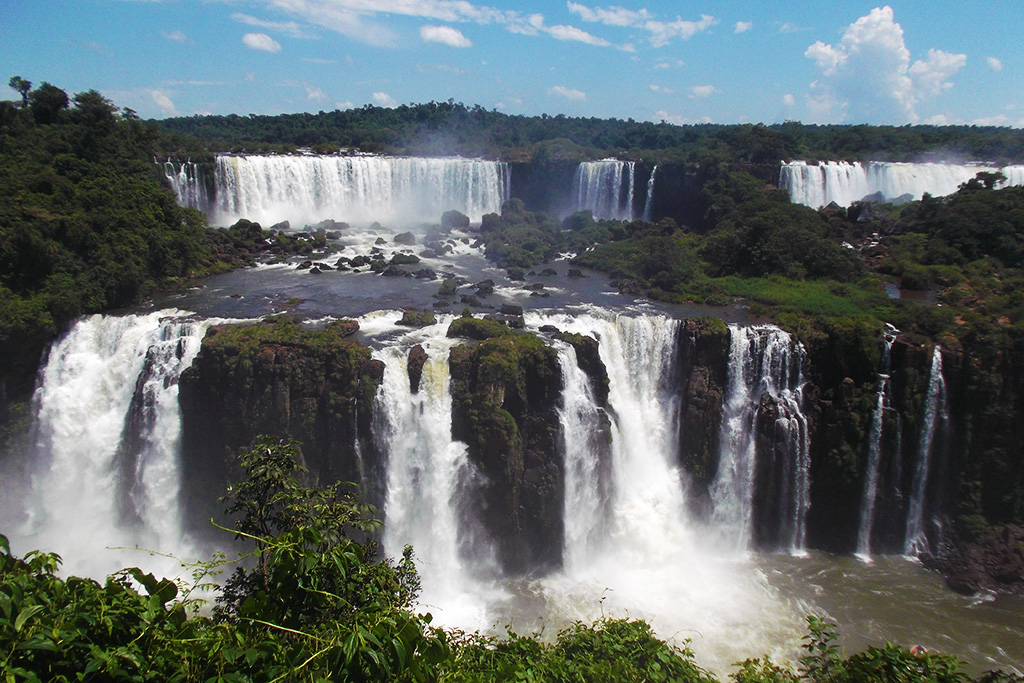
The Route I Travelled
Pinnable Pictures
If you choose to pin this post for later, please use one of these pictures:
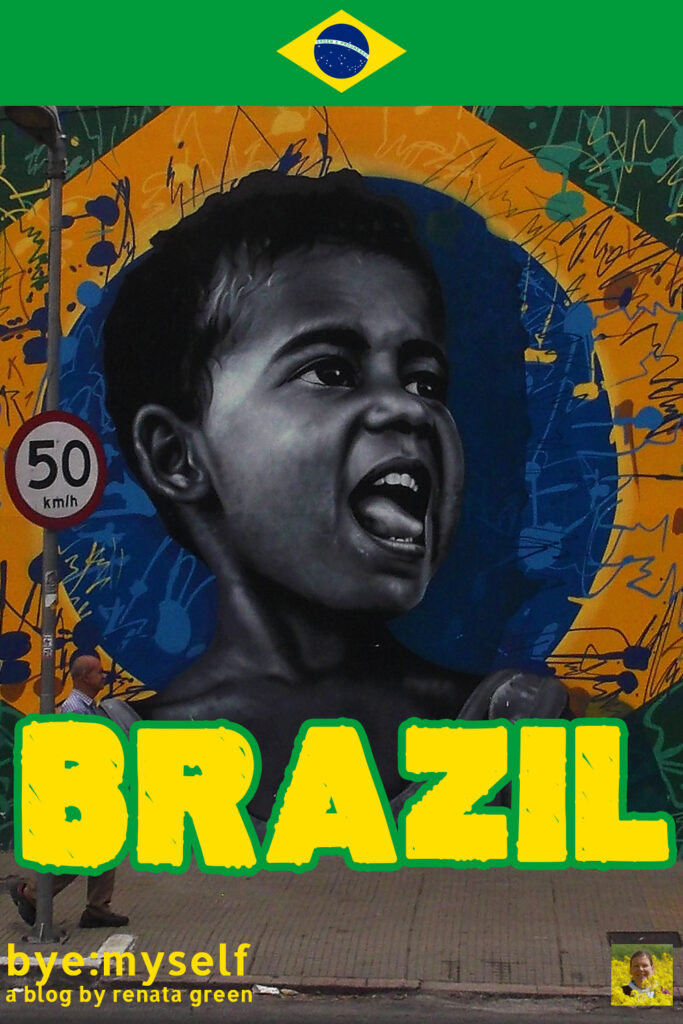


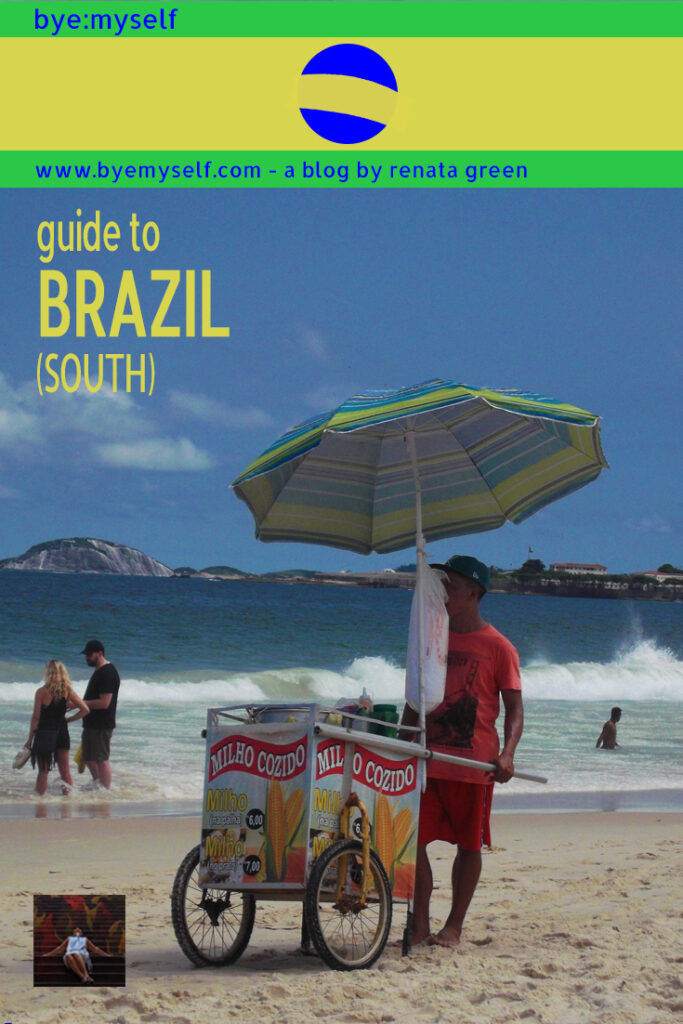
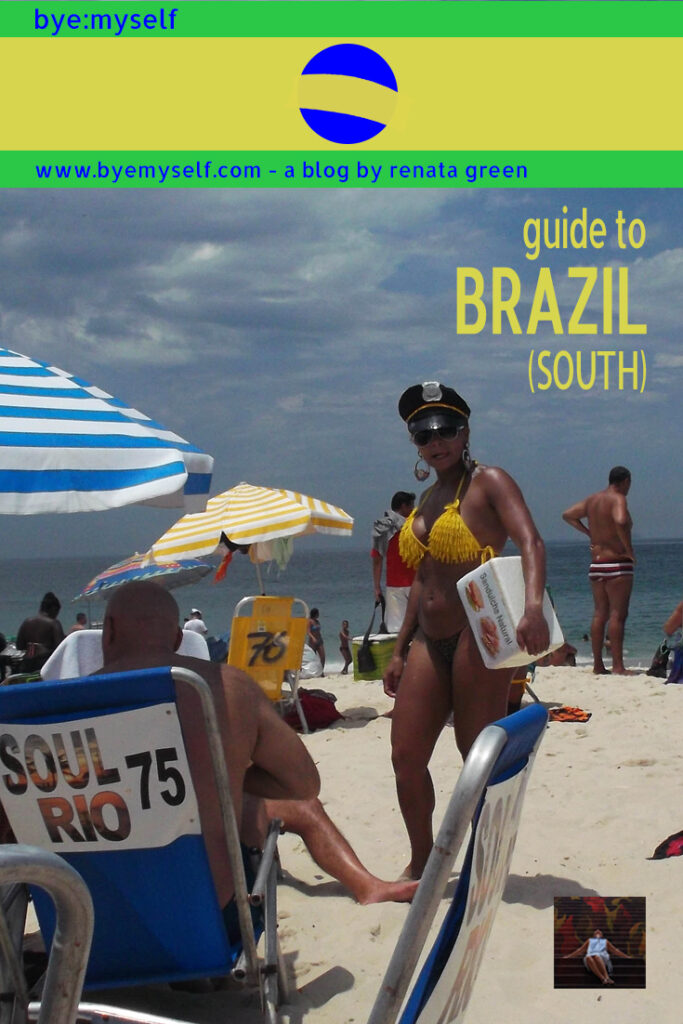

Note: I’m completing, editing, and updating this post regularly – last in August 2025.
Did You Enjoy This Post? Then You Might Also Like These:
SANTIAGO – Capital of Afro-Cuban Culture
Guide to SÃO PAULO – Brazil’s Art Hub
Guide to MEDELLÍN – And a Day Trip to GUATAPÉ
BUENOS AIRES – from the must-sees to the hidden gems
Solo in COLOMBIA – a comprehensive guide
Guide to LIMA – beyond Miraflores
INHOTIM Botanic Garden and Gallery
Guide to OLLANTAYTAMBO and the VALLE SAGRADO
* This is an affiliate link. If you book through this page, not only do you get the best deal, I also get a small commission that helps me run this blog. Thank you so much for supporting me!
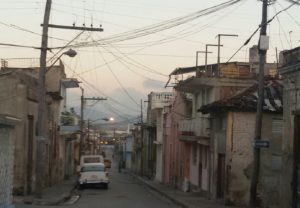
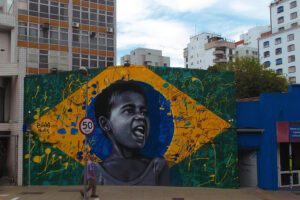

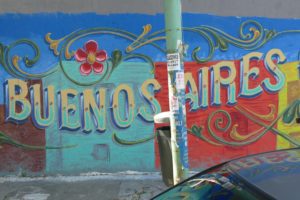



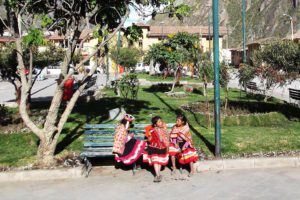
Hey, I am a teacher, and the amount of information on history is just right :))
Hahaha, thank you, that’s very reassuring 😀
We planned a trip to Rio de Janeiro, one of the most visited cities in the Southern Hemisphere, for our summer vacation. My father is a lover of natural beauty, and we decided to book flights to Rio de Janeiro because it is known for its natural settings, samba, carnival, bossa nova.
True – Rio is nestled in a great place.
We were excited that our big South America cruise that started 2020 had so many stops in Brazil. We had two rainy days in Rio and really did not get to see much of the city but definitely would return one day. Good to know that travelling by bus to different parts of Brazil was comfortable and clean. Would love to go inland as most of the places we saw were on the coast.
At the end of my trip, I almost liked Rio the least. Nevertheless, there are some amazing places and landmarks there.
Hiya, I’m really glad I’ve found this information. Nowadays bloggers publish just about gossips and web and this is actually frustrating. A good blog with interesting content, that is what I need. Thanks for keeping this web site, I will be visiting it. Do you do newsletters? Cant find it.
Glad you like it. Yes, I’m mailing a so-called calendar sheet every month. You can subscribe through the pop-up mask or the mask in the sidebar. Cheers! 🙂
I really want to travel to Brazil since I don’t need visa here. Also, I heard the beaches are so nice. I can’t wait for the pandemic to be over.
It’s really nice – I had a great time there.
So glad to read about Brazil from another expert traveler. I thought Brazil is not safety for traveler.But You look happy there. I would love to visit this country one day.
Actually, you do have to be more cautious and aware of your surroundings; but I was travelling by myself and was totally fine, so…. 🙂
If you are about to travel to Brazil, then this blog is a must read thing. Thanks for sharing.
Luton parking meet and greet
I'll sometimes choose to visit one city over another because it's known for its street art. I often take a day just to walk around looking for street art as well
So great to learn about Brazil and some of its past. I would love to visit and maybe even learn some Portuguese. I thought it was similar to Spanish but I figured out it wasn't when I visited Portugal.
Thanks for the guide! It really makes me want to go to Brazil, I haven't been yet….
I always tell myself to learn a language before going on a big trip, unlike you I never do it! But it’s nice to hear it helped so much! Maybe I just need to get my bum in gear!!
I'm always super-motivated when travelling. I never take classes at home. Another good reason for travelling ?
Brazil is definitely a country that must figure in most if not all traveller's bucket list. I would love to visit it mainly for its varied landscapes, especially the amazonian forests. Also the culture of Brazil is vibrant and unique which I would love to experience. this is indeed a good ready reckoner for first timers to Brazil.
I must go back for the Caribbean and for the Amazonian region – maybe next spring.
he continent of South America is so huge, and Brazil itself is teeming with so many possibilities. Making an itinerary for just one part will be a challenge 🙂 So I'm making a start with your suggestions.
How lucky for you! We are planning to spend 3 weeks in 2020. Since we won't have classes, we may be able to cover more!!! This has made me decide to go! Thanks.
Definitely – it was nice to stay for two weeks in Rio, but one week would have been enough. But it was not a vacation – it was 'Bildungsurlaub' – an extra, so I had to do my share ?
There is so much to see in Brazil! I love that the landscape is so varied, just like the people. I loved hearing your experience about the school, too. Traveling to another country is a great way to learn the language.
I have heard from a lot of people that Brazil is a wonderful place to visit! I'd love to visit the country soon 🙂
Brazil, while learning brazilian(portuguese), that is actually the perfect way ti visit a country!
I have never been there, but i sure will!
Good article, loved the tips for the school and the fact that you talked about a bit of its history!
Brazil is on my bucket list as well, and I'm glad you got the chance to cross it off of yours. I hope to do that someday!
Looks like you had a really good time! Brazil is huge so I'm sure there is much more for you to explore. The intensive language class sounds interesting and a good way to get immersed in the culture as well.
Brazil looks really beautif and interesting. Hope i get to see it sonetime. Adding to the bucket list
This looks like a really nice trip! I've never been to Brazil before. I'm a solo traveler most of the time and even though I've always wanted to go, I never thought it would be safe enough. I should really look into it and visit one day!
Lucky You to visit so many places in Brazil! But I like the fact, that you don’t check it yet as Done on your bucket list and you want to come back for more. I agree it’s a huge country and definitely worth coming back! I just went to waterfalls Iguaçu on the Brazilian side so I am not even counting being in Brazil. Would love to start from the Amazon part in the north. Thanks for information on the buses, good to know that that’s the option. If I have enough time that would be my way of transport. Looking forward to seeing your next posts from Brazil! Happy exploring! Best regards, maybe see you somewhere in a Amazon next year!
Every time I read your blog posts on Brazil, I just want to get out there even more. My lips are wet reading this and looking at the photos. Seems to be a lot of things to do and see there, so I think I need at least a year. He he.
The scenery is so beautiful, Brazil has never been on my "have to visit list" is that crazy? LOL
Rio looks so beautiful!! Hope I can get there one day.
xo
Taylor
http://www.reeseshardwear.com
I can't wait to visit Brazil one day. Great post!
I completely agree with you. Brazil is on my bucket list along with Australia and India. I've had the opportunity to work with quite a few people who live in Brazil and they only make me want to visit there more. Great tips! Thanks for sharing.
We spent in Rio 5 days and 2 more in Paraty. I would love to go back ro Brazil again. My dream is to see the Carnival in Rio ☺️
I've been there during Carnival and didn't like it at all (check out my post https://byemyselftravels.blogspot.de/2018/02/IAmWhatIAm.html ) – it was rough. The beautiful part takes place at the Sambadrome, not in the streets. However, visiting Brazil is always worth it.
Well i will shock you. I I don't have Brazil on my bucket list. But you make a nice case with your post, so I may reconsider.
This doesn't 'shock' me, I only think that many travellers have it sort of automatically on their list – just like for instance India. For me, I had a great time, did see beautiful places – and if you are into travelling, I can only recommend it.
I actually really want to visit Brazil this year especially Rio because there's a tennis tournament there. I really love the history of Brazil. My only concern is the safety. How was your experience?
Oh my, Emmanuel, what can I say?! Your concern is totally justified, only yesterday evening I saw on TV how bad it really is. If I had seen that before, I maybe would have stayed away. But – as I wrote in my post https://byemyself.com/2018/02/DangerSeemsCloserFromAfar.html, danger does seem closer from afar, i.e. in two weeks in Rio I didn't feel threatened. But I must also say that I don't go out at night, that I didn't 'visit' favelas, etc. I was careful and didn't find myself in any funny – not in the sense of haha-funny – situation; but, yes, it is a dangerous city.
It sounds like you had a wonderful time. Also, how interesting that you get to travel while learning! Brazil looks like a beautiful place to visit!?
Actually, I think that travelling is always learning – whether on purpose or as a 'side effect' 😉
You said it right , Brazil is so in my list too . After reading you post I'm sure I'm gonna enjoy alot being there.
Yes, Kartika, you will, there is really a lot to see and to do – so, so beautiful!
Yes yes! I would like to visit Brazil, too. I remember many years ago, I joined a raffle promo by Havaianas to visit aBrazil. Sadly, I did not win. haha
That's hilarious! Did you at least get a pair of flip flops? Good luck next time, Sigrid!
I have family from Brazil – my great grandfather. It's on my bucket list for sure. I can't wait to go someday! 🙂
How cool is that, Jennifer! You'll have a great time there, I'm sure!
What a great opportunity you've had there, I bet the experience will last for a lifetime. Lucky you are, I hope you will have the chance to visit the other countries on your bucket list as well.
Thanx, Anna, I hope so, too, but if I want to live up to my bucket list, I have to get really, really old….
I never really thought about going to Brazil before, it looks beautiful though. May need to add it to my want to do list.
I really want to go Brazil, especially with my daughter. Her more so wanting to go after watching the cartoon film Rio lol! But so glad you were able to find this educational opportunity online.
It's just great – sooo much to do and see for adults and kids alike.
Your trip to Brazil looks amazing. I hope to visit one day.
It was amazing and I can only recommend it.
Brazil seems like such a brave place to go visit although i know many people who have over the past few years. i will make it to south america someday I am sure!
Ooops, yes, you are quite right: Yesterday there was something on violence in Rio on TV – if I had seen that before, I probably would have stayed away. However, I wasn't over-careful and did not behave like a moron, but unfortunately you can get mugged even if you do everything 'right'. Besides Rio, I felt safe in all the other places, though.
Brazil is definitely a beautiful country! It is nice to see you taking a language course in advance so that you would be familiar with the language once in Brazil. Anyway, I'm loving the scenic view of the Inhotim Botanic Garden in Brumadinho.
Inhotim was definitely one of the biggest highlights and totally worth the effort. Speaking Portuguese certainly helped a lot and brought me much closer to people.
I've always wanted to see Brazil and just explore the different places. I think it's awesome that you got to go earlier than you expected and that you had an amazing time there.
Yes, and it inspired me to see more of it – asap!
This sounds super exciting! I've heard that Brazil is amazing! It's great that you're planning to explore more of it!
I had a really great time there.
Brazil is huge so I can understand why you needed more time especially since you were taking language classes. Did the classes help?
Totally, Komal. I had individual classes, four hours one on one = bootcamp!
Awesome Information!!! Thanks to Admin for sharing this. I visited many pages of your website. Really your blog is awesome and such a big help to female solo travelers.